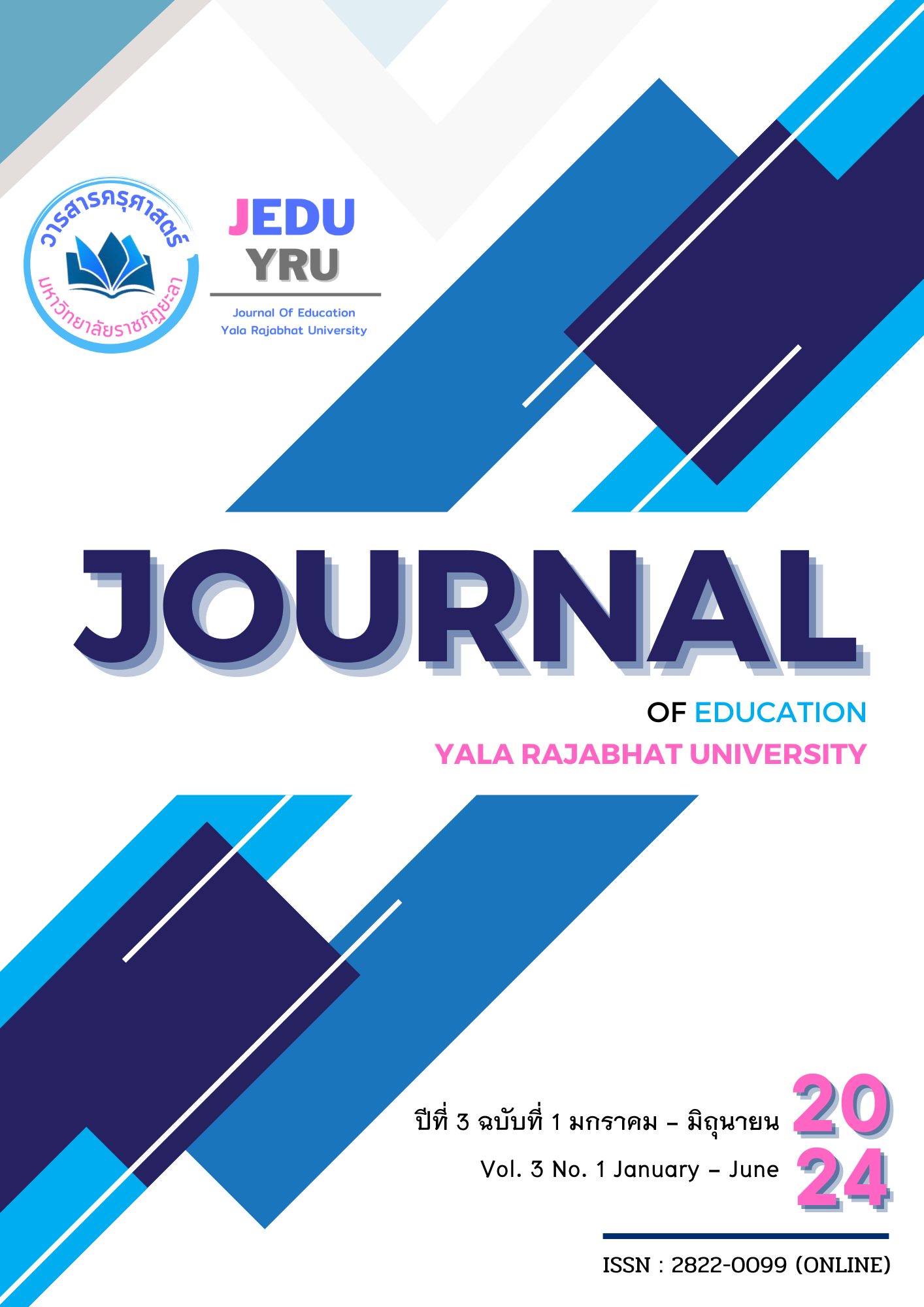Development of Academic Achievement in Mathematics on the Subject of Geometric Transformationsof Grade 8 Students Using the Inquiry Method (5E)
Main Article Content
Abstract
This research aims to 1) develop learning achievements in mathematics on Geometric transformation of grade 8 students through knowledge-earning method with the 70% criteria, 2) compare learning achievements in mathematics on Geometric transformation of grade 8 students before and after learning management through 5E cycle learning model, The samples used in this study were 41 students in the second semester of the 2023 academic year at Wangsammo Wittayakarn School, Wang Sam Mo District, Udon Thani Province, selected using cluster random sampling. The research tools were the learning management plan using the 5E cycle learning model, the learning achievement test. The statistics used to analyze the data were mean, standard deviation, percentage, and t-test. The results showed that 1) the learning achievement in mathematics using the 5E cycle learning model after learning was higher than before learning at the statistical significance level of.05. 2) The learning achievement in mathematics after receiving the learning activities using the inquiry method (5E) was higher than the criterion of 70 percent with a statistical significance at the .05 level.
Article Details
References
กองทุนเพื่อความเสมอภาคทางการศึกษา. (2563). ปรับการเรียนเปลี่ยนการสอน เลิกท่องจำความรู้มุ่งสู่การฝึกแก้ปัญหาด้วยตัวเอง. กสศ ห้องเรียนคุณภาพ [ออนไลน์]. ค้นเมื่อ 29 มกราคม2563, จาก: https://www.shorturl.asia/Eq986.
กระทรวงศึกษาธิการ. (2560). ตัวชี้วัดและสาระการเรียนรู้แกนกลาง กลุ่มสาระการเรียนรู้คณิตศาสตร์ (ฉบับปรับปรุง พ.ศ. 2560) ตามหลักสูตรแกนกลางการศึกษาขั้นพื้นฐาน พุทธศักราช 2551. กรุงเทพฯ: โรงพิมพ์ชุมนุมสหกรณ์การเกษตรแห่งประเทศไทย.
นภาพร จารุจันทร์ และ จิตราภรณ์ บุญถนอม. (2565). การศึกษาผลสัมฤทธิ์ทางการเรียนวิชาคณิตศาสตร์ เรื่อง เศษส่วน โดยใช้กิจกรรมการเรียนรู้แบบสืบเสาะหาความรู้ 5 ขั้นตอน (5E) ของนักเรียนชั้นประถมศึกษาปีที่ 5 (รายงานวิจัย). กรุงเทพ: มหาวิทยาลัยรามคำแหง.
ปิยนันท์ สวัสดิ์ศฤงฆาร. 5E Instructional Model สารานุกรมการบริหารและการจัดการ [ออนไลน์]. ค้นเมื่อ 29 มกราคม 2563, จาก: https://drpiyanan.com/2020/07/29/5e-instructional-model/.
ศรีวิภา พูลเพิ่ม. (2561). การพัฒนาผลสัมฤทธิ์ทางการเรียนคณิตศาสตร์ เรื่อง ความน่าจะเป็น โดยใช้การจัดการเรียนรู้แบบสืบเสาะหาความรู้ (5E) ชั้นมัธยมศึกษาปีที่ 3 โรงเรียนบ่อกรุวิทยา. วิทยานิพนธ์ปริญญาวิทยาศาสตรมหาบัณฑิต สาขาวิชาคณิตศาสตร์. มหาวิทยาลัยศิลปากร.
สุภกาญจ์ คำวาริห์ ปวีณา ขันธ์ศิลา และ สุวรรณวัฒน์ เทียนยุทธกุล. (2566). การพัฒนาผลสัมฤทธิ์ทางการเรียนคณิตศาสตร์ เรื่อง การแยกตัวประกอบของพหุนามดีกรีสอง ของชั้นมัธยมศึกษาปีที่ 2 โดยใช้วิธีสืบเสาะหาความรู้ (5E). วารสารราชภัฏสุรินทร์วิชาการ, 1(6), 31-44.
Bonwell, C. C., & Eison, J. A. (1991). Active Learning: Creating Excitement in the Classroom (ASHE-ERIC Higher Education Report). Washington DC: George Washington University.
Bybee, R., & Landes, N. M. (1990). Science for life and living: An elementary school science program from Biological Sciences Improvement Study (BSCS). The American Biology Teacher, 52(2), 92-98.
Duran, L.B., & Duran, E. (2004). The 5E Instructional Model: A learning cycle approach for inquiry-based science teaching. The Science Education Review, 3(2), 49-58.


